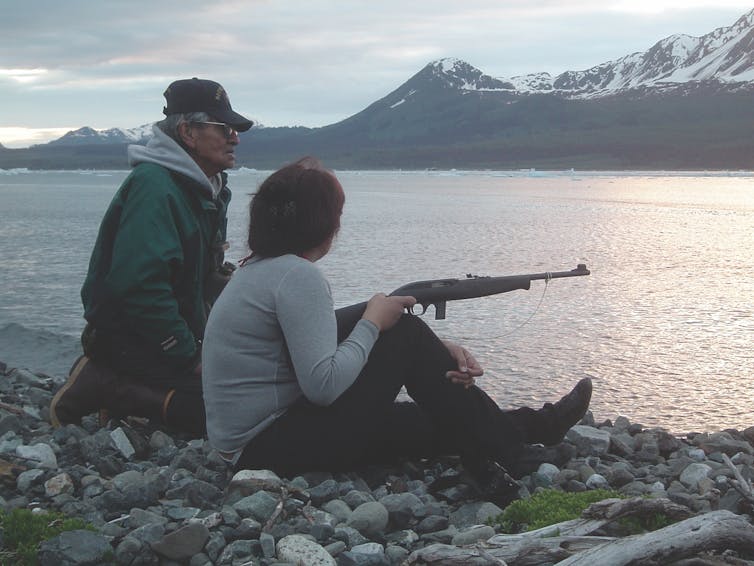Five hundred years ago, in a mountain-rimmed ocean fjord in southeast Alaska, Tlingit hunters armed with bone-tipped harpoons eased their canoes through chunks of floating ice, stalking seals near Sít Tlein (Hubbard) glacier. They must have glanced nervously up at the glacier’s looming, fractured face, aware that cascades of ice could thunder down and imperil the boats – and their lives. As they drew near, they would have asked the seals to give themselves as food for the people and talked to the spirit of Sít Tlein to release the animals from his care.
Tlingit elders in the Alaska Native village of Yakutat today describe their ancestors’ daring pursuit of harbor seals, or “tsaa,” and the people’s respect for the spirits of the mountains, glaciers, ocean and animals of their subarctic world.
Long ago, they say, migrating clans of the Eyak, Ahtna and Tlingit tribes settled Yakutat fjord as the glacier retreated, shifting their hunting camps over time to stay close to the ice floe rookery where the animals give birth each spring. Clan leaders managed the hunt to avoid premature harvesting, overhunting or waste, reflecting Indigenous values of respect and balance between people and nature.
Now, Yakutat’s 300 Tlingit residents continue this way of life in modern form, harvesting more than 100 different fish, birds, sea mammals, land game and plants for subsistence use. Harbor seals are the most important, their rich meat and blubber prepared using traditional recipes and eaten at everyday meals and memorial potlatch feasts.

Through a mix of teaching and lived experience, ecological knowledge is passed on from one generation to the next. George and Judith Ramos at Disenchantment Bay, 2011.
Smithsonian Institution
Yet the community faces a crisis: The dramatic decline of the Gulf of Alaska seal population due to commercial hunting in the mid-20th century and the failure of the animals to recover because of warming ocean waters. To protect the seals and their way of life, residents are turning to traditional ecological knowledge and ancestral conservation practices.
We are an Arctic archaeologist who studies human interactions with the marine ecosystem and a Tlingit tribal historian of the Yakutat Kwáashk’i Kwáan clan. We are two of the leaders of a project that examined the historical roots of the situation.
Our collaborative research, which brought together archaeologists, environmental scientists, Tlingit elders and the Yakutat Tlingit Tribe, has been published as the book “Laaxaayík, Near the Glacier: Indigenous History and Ecology at Yakutat Fiord, Alaska.” In it, we detail an Indigenous people’s changing way of life and evolving relationship to their glacial environment over the past 1,000 years. To do so, we combined Indigenous knowledge of history and ecology with scientific methods and data.
Ancestral sealing
According to oral tradition, the village of…



